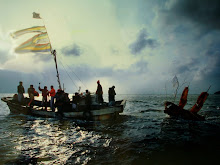Marshall McLuhan's seminal work, Understanding Media, was published some 40 years past, but many do not credit his visionary work as literally changing the way we think about the world and technology. Many will parrot his famous equation: The "Medium is the Message" without understanding what McLuhan meant by this. Some have interpreted this to mean that only the medium is important and content is not. To some extent McLuhan's concept of medium is almost a synonym for technology. On the Ginko Press website there is a comment in relationship to a promotion of the critical edition of McLuhan's book: "The 'message' of any medium or technology is the change of scale or pace or pattern that it introduces into human affairs." This serves to clarify that the medium is an extension of human range.
Mark Federman clarifies McLuhan's use of McLuhan defines medium for us as well:
"Right at the beginning of Understanding Media, he tells us that a medium is "any extension of ourselves." Classically, he suggests that a hammer extends our arm and that the wheel extends our legs and feet. Each enables us to do more than our bodies could do on their own. Similarly, the medium of language extends our thoughts from within our mind out to others."
"What is the Meaning of The Medium is the Message?" by Mark Federman
Further, Federman helps us understand that the meaning of message is much more than the so-called content of the message:
"McLuhan tells us that a "message" is, "the change of scale or pace or pattern" that a new invention or innovation "introduces into human affairs." (McLuhan 8) Note that it is not the content or use of the innovation, but the change in inter-personal dynamics that the innovation brings with it."
"What is the Meaning of The Medium is the Message?" by Mark Federman
Thus McLuhan regards the message as the agent of change or transformation. If we start to look at the Internet or the Wide World Web as we used to call it, we can begin to comprehend the complexity of how this new medium (technology) is transforming our behavior and changing the world. McLuhan's work predates the Internet, but his insights in effect predicted the inevitability of technology creating a global village and bring the oral tradition into equal footing with the visual.
and:
16 years ago

